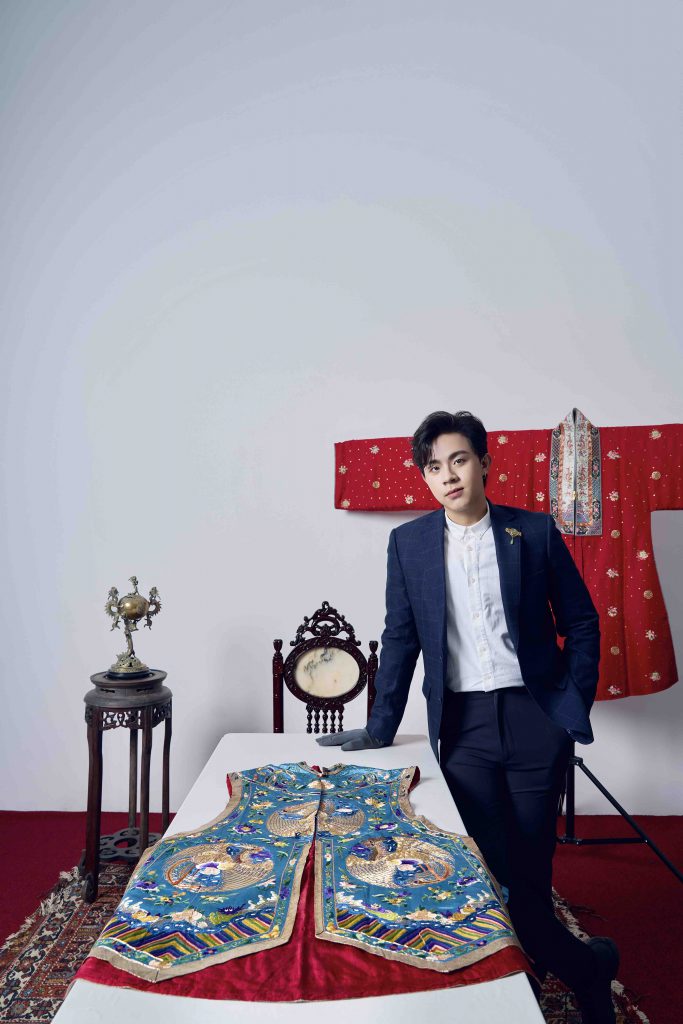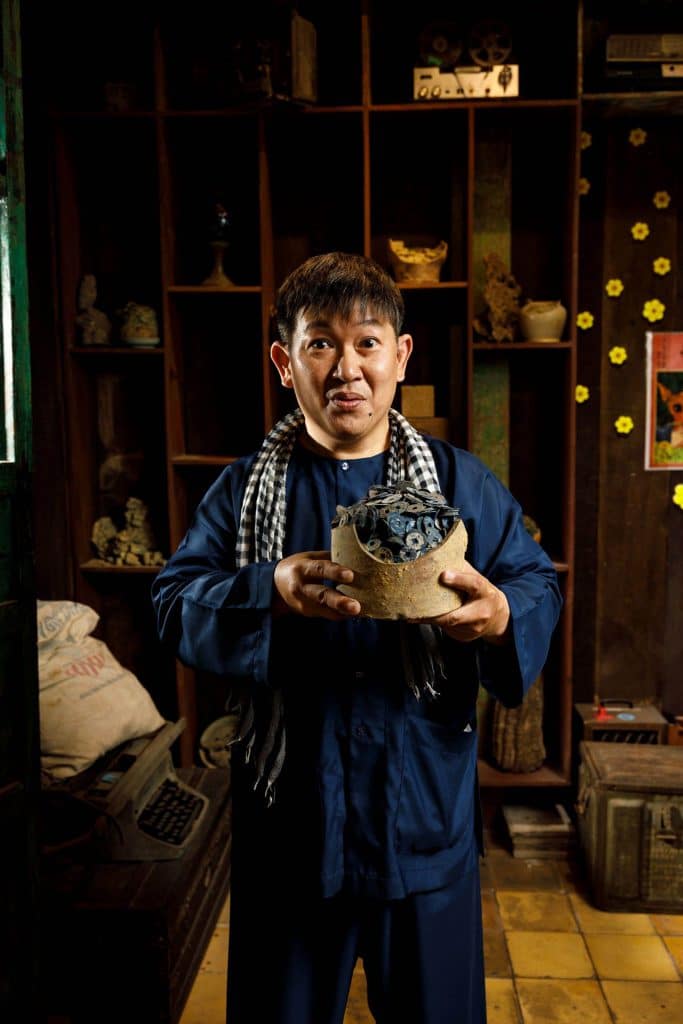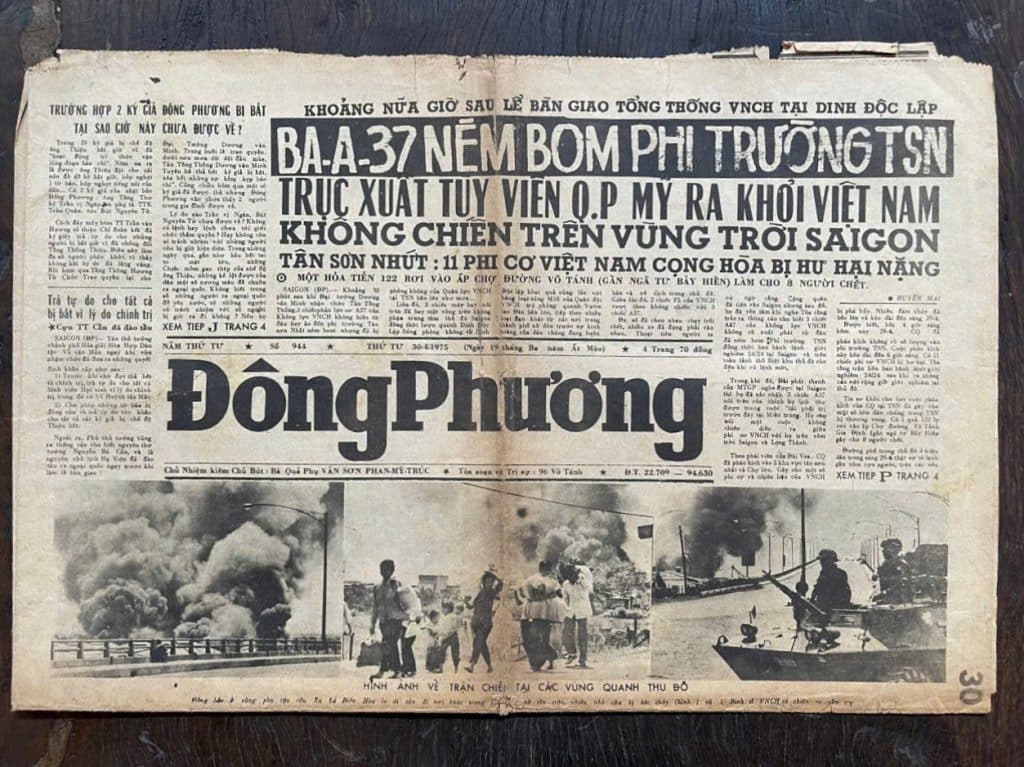Story NAM THI, PHUONG UYEN
Photos INTERVIEWEES
This month, Heritage Fashion sits down with collector Huynh Minh Hiep and researcher La Quoc Bao – two leading figures passionate about preserving and celebrating Vietnam’s cultural values.

Researcher La Quoc Bao
In the world of Vietnamese antiques, La Quoc Bao is known for various roles: researcher, collector and traditional fine artist. A passion for and appreciation of ancient values was ignited early in his life. His grandfather’s legacy includes a temple with vibrant festivals showcasing the cultural fusion between Chinese and Vietnamese traditions in Kien Giang. His mother hailed from a prestigious family in Ben Tre province and at a young age taught Bao about their family’s antique collections.
In 2017, during a visit to Huynh Thuy Le Ancient House, Bao was inspired to incorporate traditional patterns into modern sneakers. In 2020, he acquired his first Vietnamese antique in Domont, France: a rare pair of “bo tu” decorative rank badges intended for a Nguyen Dynasty official, which opened his path toward cultural research that continues today.
La Quoc Bao’s work is like that of a “keeper of time,” and he says he is fortunate to have been chosen by the ancestors to repatriate and promote artifacts from history. Bao is fascinated by originality, not just the simplicity of the elements that make up a complex world but the beauty of the color palette, materials and accessories accompanying an artifact. “I want the modern generation to have a correct perspective on the worldview of the past; they are much more vibrant and glorious than we think,” he says. In his dual focus on restoration and adaptation, Bao leans towards applying heritage materials while also recreating historical contexts. He harbors an ambition – to build and introduce to the public a platform for understanding Vietnamese costume history in an accessible manner. Bao does not confine himself within frameworks when recreating ceremonial costumes but allows ample space to weave historical narratives into modern fashion. He balances being both a researcher and an artist while letting his imagination shape his creations. This approach led to the birth of his Annam Heritage shoe collection inspired by Vietnamese art in 2017.

In reconstructing ancient materials and costumes, La Quoc Bao often prioritizes direct research on artifacts; this has been a reason behind his involvement in collecting antiques before moving on to photographic documentation. For instance, his project Hoa Quan Le Phuc (The Resplendent Costumes) – initiated with collaborator Nguyen Phung Minh Luan at the end of 2021 – processed materials, patterns and shapes according to traditional styles while also integrating modern technology suitable for contemporary wearers. In that year alone, he successfully worked with Van Phuc silk village to develop “song phung chau tho” (Two Phoenixes Paying Homage to Longevity) traditional dyeing and air dry techniques.
Each period sees Bao reference numerous artifacts, from celebratory banners to embroidered panels and clothing; all are examined internally while comparing color discrepancies externally before deriving suitable palettes. In some cases, to avoid a shock for those accustomed to artifacts, the colors of garments in Hoa Quan Le Phuc were adjusted within the scope of research reflecting the aesthetics of Vietnamese ancestors. Bao adds that receiving a warm reception both domestically and internationally is an honor he deeply appreciates. With his knowledge accumulated over more than half a decade engaging with Nguyen Dynasty aesthetics and cultural treasures, Bao is currently compiling a specialized book on Vietnamese clothing featuring high-level expertise derived from his collection of over 100 artifacts. He hopes this work will be published next year as an art book in bilingual format.

Collector Huynh Minh Hiep
“Just close the door, and the past will unfold right in front of you.” This is the promise of Lua, a café located on Nguyen Van Troi Street in Ho Chi Minh City featuring over 10,000 artifacts collected by Huynh Minh Hiep. Items range from the Motobecane AB1 during Emperor Bao Dai’s reign to the Gia Dinh newspaper edited by Truong Vinh Ky to ice grinding tables and yellowed film posters that were part of everyday life for the people of Saigon before 1975.
Hiep has meticulously curated and displayed these pieces throughout the café’s expansive 1,000 square meters of space. “In my collections, from movie tickets with my first girlfriend to old Cai Luong scripts, advertisements for milk and colorful soda bottles, I have preserved everything from old Saigon,” he says.
Patrons of all ages and backgrounds are drawn to Lua’s timeworn collection. Young people express their fascination and curiosity about a Saigon that existed decades before they were born. However, the majority of visitors are older. They come seeking memories, sharing old stories over cups of filtered coffee while reliving a bygone era. Deep nostalgia fills the air as these patrons revisit their past.
Hiep says that his passion for collecting started in 1993 when he worked at a duty-free shop at Tan Son Nhat Airport, where he had the opportunity to meet and perform magic for many international tourists. As a result, they gifted him coins from their countries as tokens of appreciation. Initially focused on currency from various nations and ancient Vietnamese coins, Hiep expanded his scope to include preserving and safeguarding ancient artifacts from Saigon.

“It is undoubtedly my love for Saigon that drives me to ensure these items do not fade away,” he says. “I want to preserve them for future generations to see what artifacts from old Saigon looked like. At all costs, I seek them out and bring them back to create a space for display.”
Through long journeys in search of artifacts, the joy of discovery brings Hiep unparalleled happiness. “It feels like discovering relics from ancient times,” he says. “This work is a mission I must undertake, and I cherish that mission.”
The hardest challenge, he adds, is persuading people to part with items they spent years collecting. After many years tirelessly searching for and adding to his collections, Hiep has yet to sell any artifacts. However, if any museum or organization needs items for relevant exhibitions, he is willing to lend them for free or even donate his possessions. Hiep says he sometimes feels regret over old items that are not well-preserved. He has always harbored a dream of opening a museum dedicated to old Saigon to showcase his collected artifacts and introduce them to the community. For him, each artifact is like a witness to history that honors a bygone era and preserves valuable cultural heritage.
“I will continue this work so that younger generations understand how the past was,” Hiep says. “I want the cherished memories of old Saigon to live on forever.”










